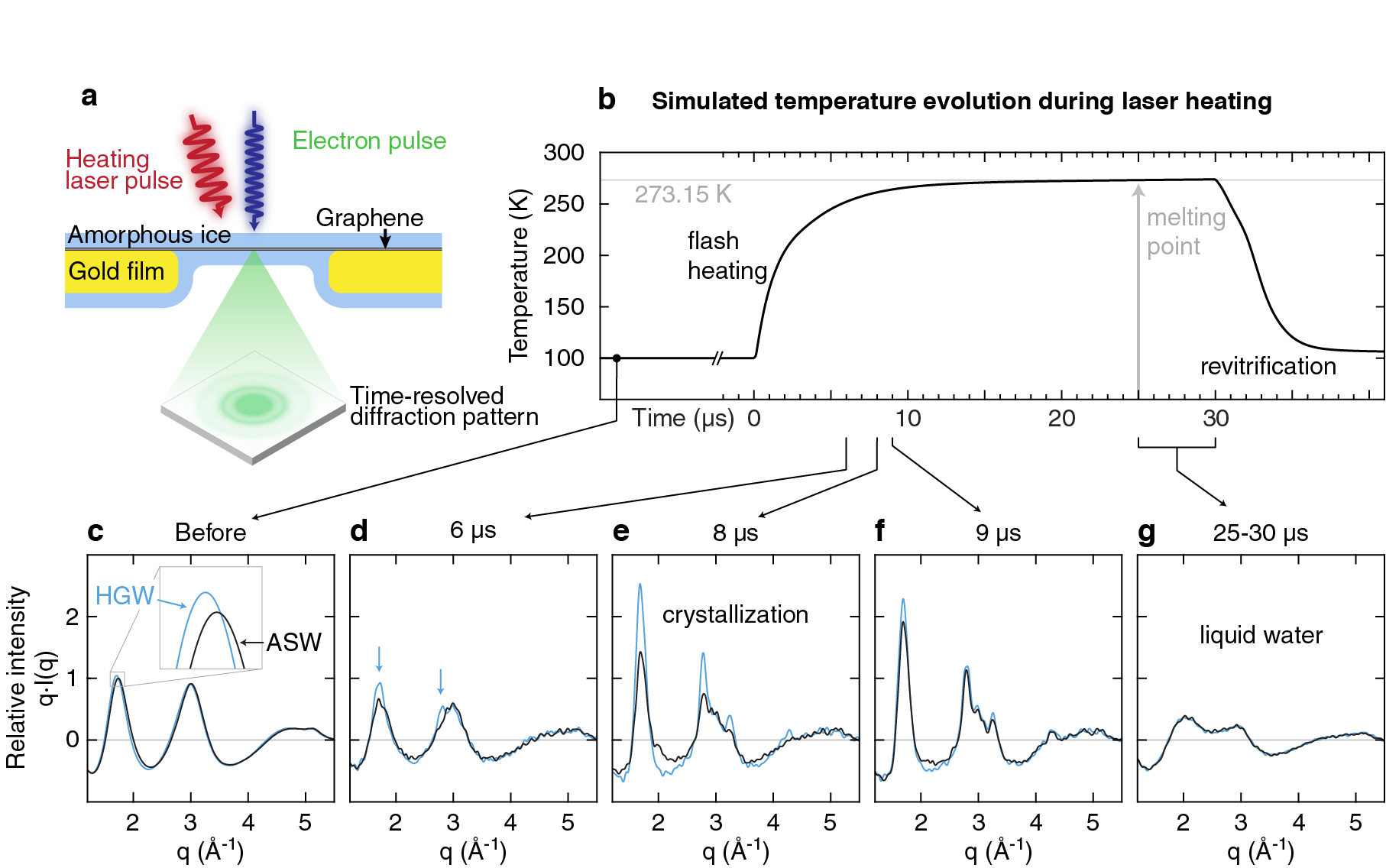Flash heating water through no man's land — Structural evolution and crystallization kinetics
We present a new experimental scheme to study the thermodynamic and kinetic properties of water in its supercooled regime, nicknamed "no man’s land". The experimental approach is illustrated in panel a below. First, a thin layer of vapour deposited amorphous ice is grown on a graphene substrate before being flash heated with a laser. The simulated temperature evolution is depicted in panel b. After an initial steep rise, the temperature begins to level off between 5-10 µs and the sample liquifies at 25 µs. The structural evolution of water is measured during this process by recording diffraction pattern with high-brightness electron pulses of 2µs duration.[1] Finally, the laser pulse is turned off after 30 µs which results in rapid cooling (107 K/s) and revitrification of the sample to form hyperquenched glassy water (HGW).[2] The sample is then flash heated a second time to compare the structural evolution of ASW and HGW.
Panels c-g show the time-resolved diffraction pattern of ASW (black) and HGW (blue) during flash melting at the important time steps. Interestingly, both ices crystallize before melting, even though they revitrify after the end of the laser pulse to form HGW, suggesting that the critical heating rate to outrun crystallization is significantly higher than the respective cooling rate during hyperquenching. Moreover, we find a different structural evolution of the two ices in no man’s land as well as in their crystallization kinetics. Our data shows, that HGW crystallizes about 1.5 µs earlier than ASW.
Our experiments shed light into the complex dynamic behavior of water in no man's land and promise to help better understand the mysteries of this liquid we all depend on.

[1] P. K. Olshin, G. Bongiovanni, M. Drabbels, U. J. Lorenz, Nano Lett. 2020, 21, 612-618.
[2] J. M. Voss, O. F. Harder, P. K. Olshin, M. Drabbels, U. J. Lorenz, Chem. Phys. Lett. 2021, 778, 138812.